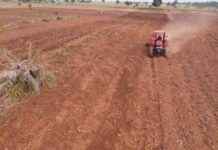Exploring the Impact of Road Conditions on the RN3 Route from Kisangani to Lubutu
From Kisangani in the province of Tshopo to Lubutu in the province of Maniema, the road is a nameless ordeal. Stretching 244 kilometers, this section of the national highway number 3 is riddled with over fifteen yawning potholes. Around each pit, dozens of vehicles, big and small, are parked. Every five kilometers, at least one dead-end disappoints travelers. It now takes days to complete the journey from Kisangani to Lubutu. Yet, it only took a few hours to arrive there when Grande Orientale was still intact. Motorcycles are becoming an increasingly popular choice for users of this road. The journey lasts between forty-eight hours and five days, according to taxi drivers interviewed at PK 141 on the Tshopo side in the Ubundu territory. To cross each pit, detours are sometimes negotiated for up to 4,000 FC. At PK 141, it takes at least 6 men to facilitate the diversion of a motorcycle. They are paid 1,000 FC per head to transport the motorcycles. Additional expenses for the owners of the motorcycles who also empty their pockets at various checkpoints. This dilapidation is due to the recent downpours but also to the lack of road maintenance. Some pits can reach depths of 3 meters. The company responsible for road maintenance stops in the province of Maniema. On the Tshopo side, even when the sun is scorching, the bamboo prevents it from reaching the ground. This promotes a permanent soil moisture. From Kisangani, passing through the RN3, one can reach Bukavu in South Kivu, Goma or Walikale in North Kivu, and Kindu in Maniema. A very crucial road for the population of Lubutu, which is gradually becoming isolated with the deterioration of the Kisangani-Lubutu section. Gaston MUKENDI, in Lubutu
### The Human Cost of Neglected Roads
As we sit comfortably in our cars, driving on smooth roads, it’s easy to forget about the harsh conditions faced by others on dilapidated routes. Imagine spending days to travel a distance that should only take a few hours. This is the reality for many travelers on the RN3 route from Kisangani to Lubutu. The once bustling road has now become a treacherous path full of pitfalls and dead-ends. The impact goes beyond inconvenience; it affects the livelihoods of those who rely on this route for their daily commute or trade.
### The Struggle of Daily Commuters
For the residents living along this route, the deteriorating road conditions mean increased travel times, higher transportation costs, and greater risks of accidents. The reliance on motorcycles as the preferred mode of transport highlights the desperate measures people are forced to take due to the road’s poor state. The additional expenses incurred by travelers, from negotiating detours to paying for assistance in crossing pits, further exacerbate the financial burden on already struggling individuals.
### The Call for Urgent Action
It’s clear that urgent action is needed to address the deplorable state of the RN3 route. The impact of neglecting road maintenance extends far beyond inconvenience; it directly affects the economic well-being and safety of communities along the route. As we reflect on our own smooth journeys, let’s remember those facing daily hardships due to neglected roads and advocate for better infrastructure to ensure safe and efficient travel for all.
### Conclusion: A Road to Recovery
While the road from Kisangani to Lubutu may currently be a harrowing journey, there is hope for improvement. By raising awareness about the challenges faced by those traveling on this route, we can push for much-needed repairs and maintenance to restore safe passage for all. Let’s join together in advocating for better road conditions to ensure a brighter future for the communities relying on the RN3 route.

















